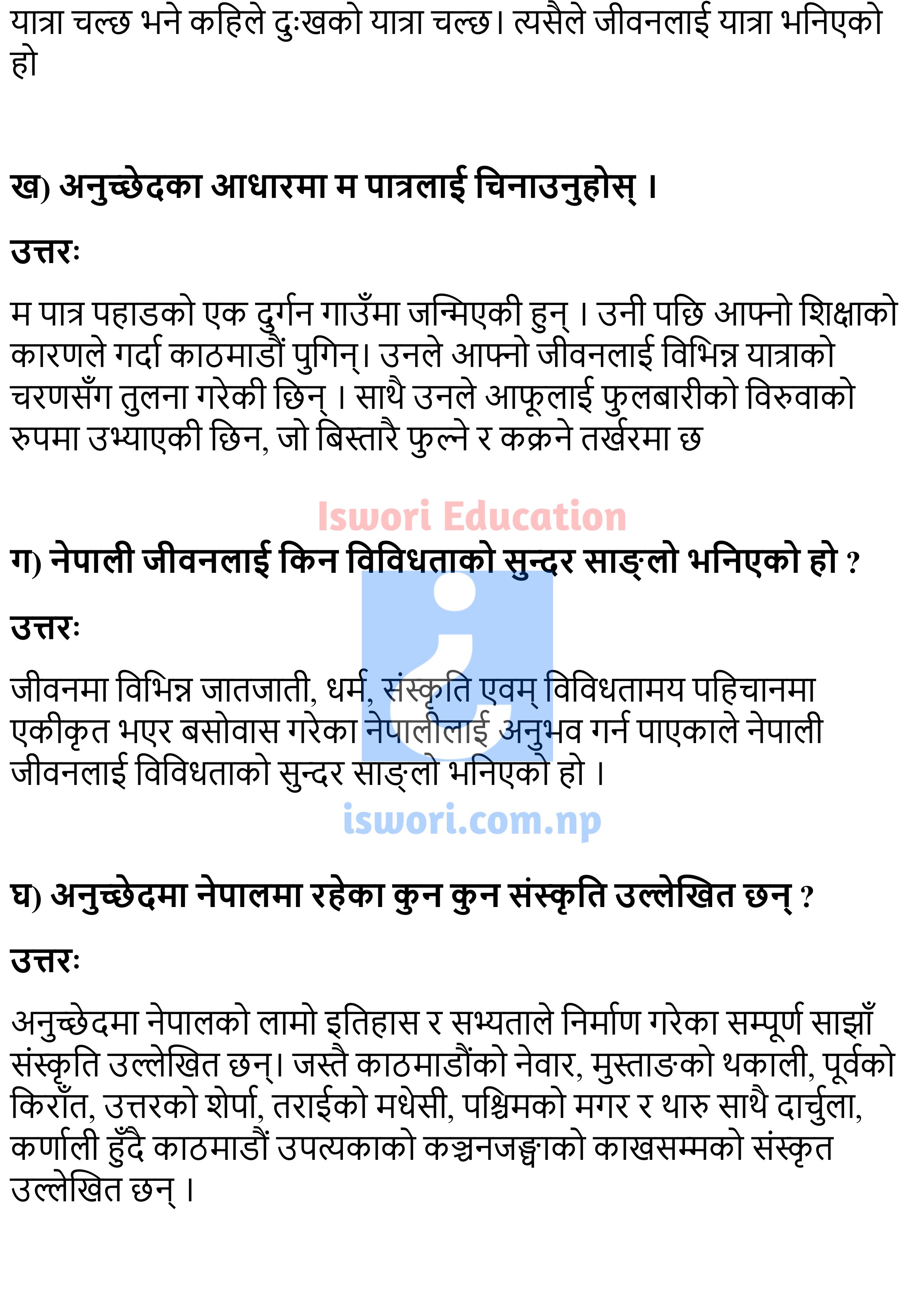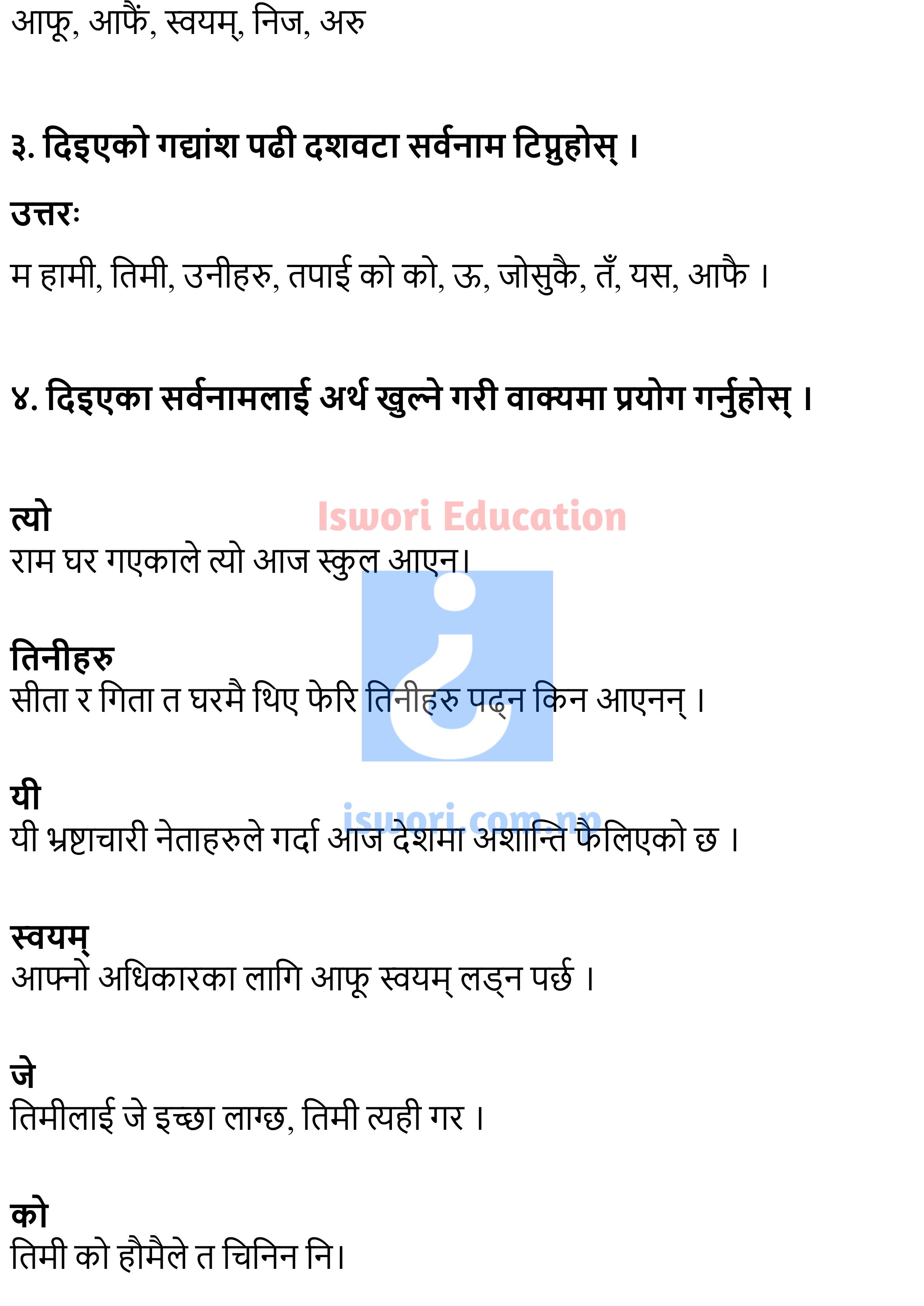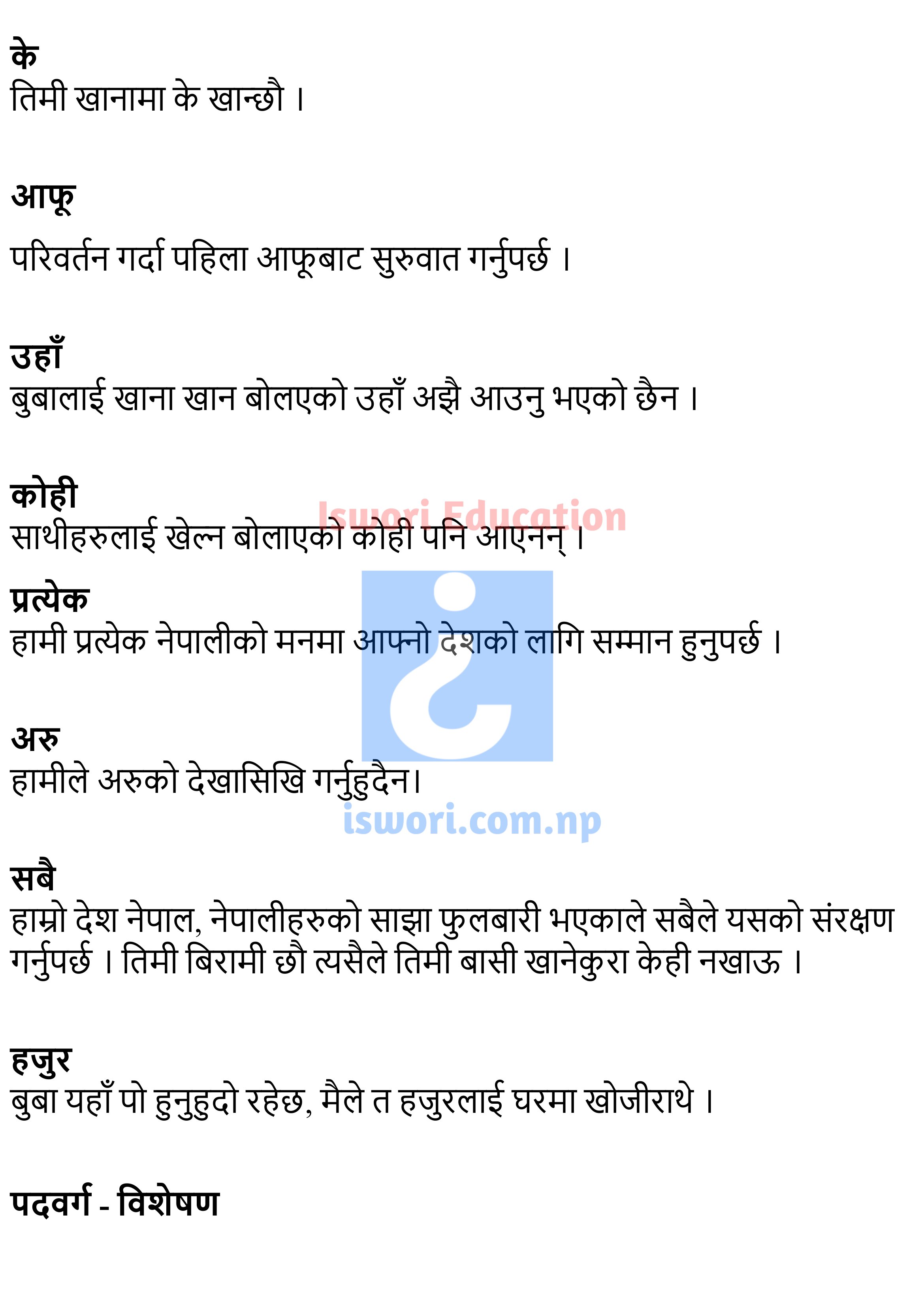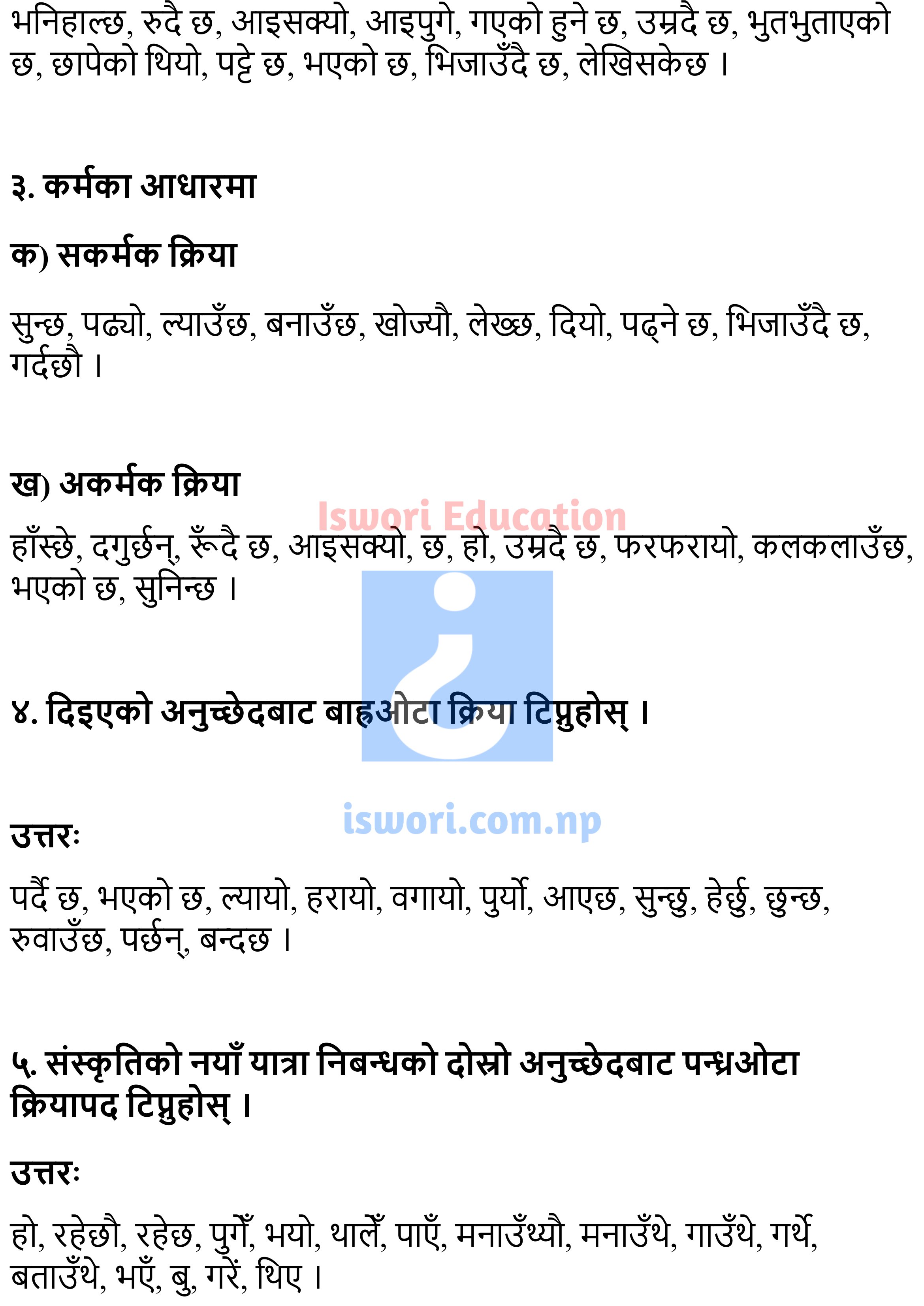Chapter 3: Sanskriti ko Naya Yatra
In the Grade 11 Nepali Essay "Sanskriti Ko Naya Yatra", Dr. Sudha Tripathi reflects the cultural diversity of Nepal, a multi-ethnic, multi-religious and multi-linguals' country.
Check:
Class 11 Model Question (All Subject)
Class 11 Nepali Model Question 2080 (With Solution)
About the author
Author Name: Dr. Sudha Tripathi
Birthdate: 2015 Jeth 28 B.S, Darjeeling
Parents: Bhawani Devi Tripathi / Jagannath Tripathi
Education: Nepali Vishyama Vidyavaridhi
(Nepali Upanayanas Naribad)
Attachment: Professor (Tribhuvan University)
Present Vice-Chancellor and Head of Education
Poetry, Fiction, Essay, Drama, Literature Writing,
Criticism, Textbook Writing
Published Literature:
- Chodal, Dharti and Asthaharu (Essay)
- Sat, tie and sungur (essay)
- Chanybetika Baglay Kura (Essay Collection)
- Dyastra Chautari (Criticism)
- Naribadi saundarya chintan (Criticism)
- Bhagya (story)
Specialties: Progressive litterateur, Feminist genius, Nariharuka Lagi inspirational personality.
Sanskriti Ko Naya Yatra Exercise, Question Answer, Grammar Solution
Sanskriti ko Naya Yatra Exercise, Question Answer, Summary, Grammar Solution Notes of Class 11 Nepali notes 2080 in given as:
Sabda Bhandar
Bodha ra aabyakti
Byakaran
Sanskriti Ko Naya Yatra Summary:
In the Grade 11 Nepali Essay, Dr. Sudha Tripathi reflects the cultural diversity of Nepal, a multi-ethnic, multi-religious and multi-lingual country. She highlights the issues of discrimination and bad practices that exist in the name of culture and religion in society.
Tripathi's goal is to create a common cultural and linguistic society free of discrimination and bad practices. Through her writing, she calls for an end to superstition, exploitation, oppression and evil practices in society. She believes that good practices and traditional values should be free from discrimination and oppression.
In the subjective style essay Sanskriti ko Naya Yatra, author Dr. Sudha Tripathi recounts childhood memories of celebrating Dashain and the impact it has had on her mind. She also discusses Nepali culture, including all castes, languages, genders and religions, as well as the impact of multi-ethnic and multi-lingual Nepali society on life's journey.
The essay's main message is that no one should be treated unfairly on the basis of class, race, gender, or religion. , should be built on trust, values and norms.
Main Points of this essay :
- As a child, the essayist had very pleasant experiences with traditions, culture and natural sights.
- Knowing that Dashain Tihar is our culture, these are always built into psychology. Since coming to Kathmandu, she has come to know a wide range of cultures such as Buddha Purnima, Losar, Magi and Deuda.
- The diversity of Nepali society appears to the author as a bridge connecting Mechi Mahakali,
- Our society is a common flower garden, and different races and cultures are our property.
- The essayist has acquired true knowledge and awareness of life through self-study.
- Human birth is natural, but after birth we are discriminated against for various reasons.
- Culture thrives on work, and work is the reason people progress. Discrimination against women in society, roles of men and women, chaupadi and other matters dominated essayists.
- Female revolts like Mangaladevi and Yogmaya are necessary to build an egalitarian society,
- The constitution created a cultural identity and now its implementation aims to give new direction to Nepali culture.
- People face discrimination based on gender, caste, skin color, and skin color, but we are normal children of nature. Culture is our identity, our lifestyle, our experience.
- Eliminate discrimination based on gender, caste, color and race and establish an equal and just society.
- "Vasudhaiva Kutumbakam" (the whole world is one family) is the key to building a society without discrimination.
Read More:
Class 11 Nepali Chapter 4: Yogmaya Exercise Summary
What are available in this Post?
- Sanskriti ko naya yatra questions and answers
- Sanskriti ko naya yatra class 11 summary
- Sudha tripathi sanskriti ko naya yatra class 11 study material
- Class 11 chapter 3 sanskriti ko naya yatra Summary, and Exercise
Sanskriti Ko Naya Yatra related FAQs
Who is the author of the essay "Sanskriti Ko Naya Yatra"?
Dr. Sudha Tripathi is the author of the essay "Sanskriti Ko Naya Yatra".
When and where was Dr. Sudha Tripathi born?
Dr. Sudha Tripathi was born on 2015 Jeth 28 B.S in Darjeeling.
Can you tell me about Dr. Sudha Tripathi's education and profession?
Dr. Sudha Tripathi had pursued Nepali Vishyama Vidyavaridhi (Nepali Upanayanas Naribad) for her education and held the position of a Professor at Tribhuvan University. She is also the Vice-Chancellor and Head of Education. Her professional activities include writing poetry, fiction, essays, drama, literature, criticism, and textbook writing.
What are the main themes of Dr. Sudha Tripathi's literary works?
Dr. Sudha Tripathi's literary works often revolve around progressive themes. She is recognized as a feminist genius and an inspirational personality for women. Her writings emphasize the empowerment of women and aim to create an egalitarian society.
What is the essay "Sanskriti Ko Naya Yatra" about?
The essay "Sanskriti Ko Naya Yatra" reflects on the cultural diversity of Nepal, addressing issues of discrimination and negative practices associated with culture and religion. It advocates for a society free from superstition, exploitation, oppression, and harmful cultural practices.
What is the main message of the essay "Sanskriti Ko Naya Yatra"?
The essay conveys the importance of building a society that treats everyone fairly, regardless of class, race, gender, or religion. It emphasizes the need for trust, values, and norms in promoting unity and eliminating discrimination.
Can you summarize the key points of the essay "Sanskriti Ko Naya Yatra"?
The essay discusses the author's fond childhood memories, the cultural diversity of Nepali society, discrimination faced by individuals, the role of women, the impact of notable figures, the constitutional support for cultural identity, and the call for a discrimination-free society based on the idea of "Vasudhaiva Kutumbakam" – the world is one family.
What is the main takeaway from Dr. Sudha Tripathi's essay in terms of building a better society?
The essay emphasizes the elimination of discrimination based on gender, caste, color, and race, striving for an equal and just society. It also underscores the importance of cultural identity and unity in creating a harmonious global community.
























